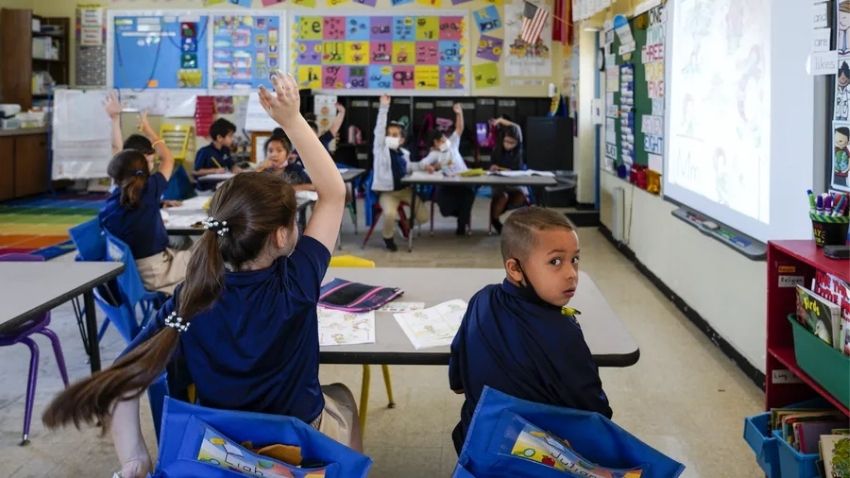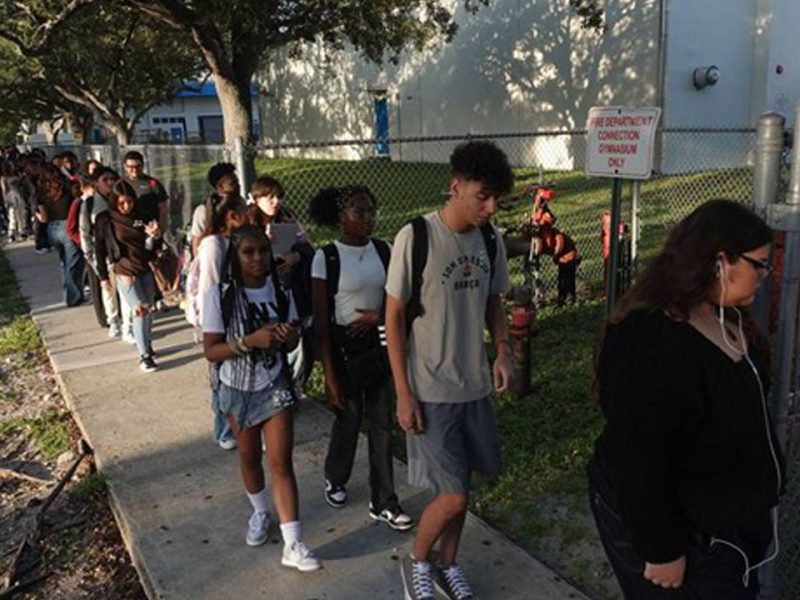
At 125, Tampa’s St. Joseph Catholic School goes from chalkboards to smart boards
The school originally served the children of West Tampa cigar workers.
Tampa Bay Times | By Paul Guzzo | March 15, 2022
TAMPA — In some ways, St. Joseph Catholic School is much different today than when retired judge E.J. Salcines was a student there in the 1940s.
He was taught by the Salesian Sisters who scribbled lessons on a chalkboard.
“The boards were black, no green, no white, all slate,” he said. “Our desks were very small. We used a lot of ink pens. Boys sat on one side of the class. Girls on the other.”
Today, the nuns are gone, blackboards have been replaced with interactive boards, and boys and girls sit side by side.
“Life changes,” Salcines said.
But some things remain the same.
The West Tampa school at 2200 N Gomez Ave. is still dedicated to the Roman Catholic faith and the Latin population.
Principal Brenda Budd estimates 85 percent of the school’s 296 students are Latin.
“That’s who we have served since the beginning,” she said.
That beginning was 125 years ago.
“We’re celebrating a special birthday,” Budd said. “It’s exciting. This school has changed the lives of a lot of people.”

Alumni include former Tampa police chief Eduardo Gonzalez, retired judge Dennis Alvarez, late radio personality Tedd Webb and retired Major League Baseball stars Dave Magadan, Tino Martinez and Lou Piniella.
“Everyone who attended St. Joseph is proud of St. Joseph,” said alum Kathy Betancourt, the retired University of South Florida associate vice president for government relations. “It has served our community well for so many years.”
St. Joseph Catholic School was opened by the Sisters of the Holy Name on Sept. 14, 1896, to serve the children of West Tampa’s cigar workers.
The school had 10 students its first year, according to the school website, and a different name and location. Called The Academy of the Holy Names, it was on the corner of N Albany and Spruce streets.
The school’s website says that in 1898 the “U.S. Army took over the building as a hospital for wounded soldiers during the Spanish-American War.” The school sisters “in one day alone served meals to over 800 soldiers.”
A corresponding church opened nearby in 1903.
In 1930 the Salesian Sisters took over the school and renamed it St. Joseph Catholic School.
“They lived in a three-story wooden cigar factory converted into a convent on the corner of Armenia Avenue and Spruce Street,” said Salcines, whose parents owned a nearby department store. “That famous convent was also the daycare for the little kids. And when classes were over, the schoolchildren walked to the convent and waited for their parents to leave the cigar factories to pick them up.”

With a laugh, Betancourt said the old brick school building was “la cucaracha heaven” and had a “huge field in the back where kids would catch bugs to feed to the animals in Sister Jerome’s third-grade terrarium.”
Betancourt attended St. Joseph in the 1950s. Most students still came from cigar families, but some parents worked in the baseball factory, a shirt factory and department stores.
“It was overwhelmingly blue collar,” said Betancourt, whose parents were massage therapists.
And most students came from Spanish- or Italian-speaking homes, yet those languages were banned in classrooms.
“That was a time when parents were being discriminated against,” Betancourt said. “Parents wanted their kids to assimilate, so that meant speaking and dressing like everyone else.”
The nuns were strict, she added, but loving. “They told Jesus’ mother when you were good. What could be better than that?”
The school at the present location opened on Sept. 1, 1955, “and was a great source of pride for the community,” Betancourt said. “It was wonderful.”
A new church was constructed next to the school in 1964.
“Before that, we walked from the school to the old church,” Betancourt said.
Today, the students still attend a weekday Mass each week.
But the last of their nuns was reassigned in 2019, Budd said, and they are no longer with the school due to a scarcity of women willing to “answer the call.”

Students are no longer from West Tampa only.
“We have 10 different zip codes that come to us,” Budd said.
And Spanish is allowed to be spoken.
“Most of our staff is bilingual,” Budd said. “When a family is a primarily Spanish-speaking family, they want somebody that they could speak with.”
The interactive boards arrived in the first week of March.
As Budd watched her staff unpack them, she laughed that St. Joseph’s founders probably never envisioned such technology would one day exist or make its way into such a blue-collar school.
“It’s just great how much this school has grown,” she said. “We all love working here but it’s also a tremendous responsibility. We are going to do our very best to make sure the school continues for the next 125 years.”





